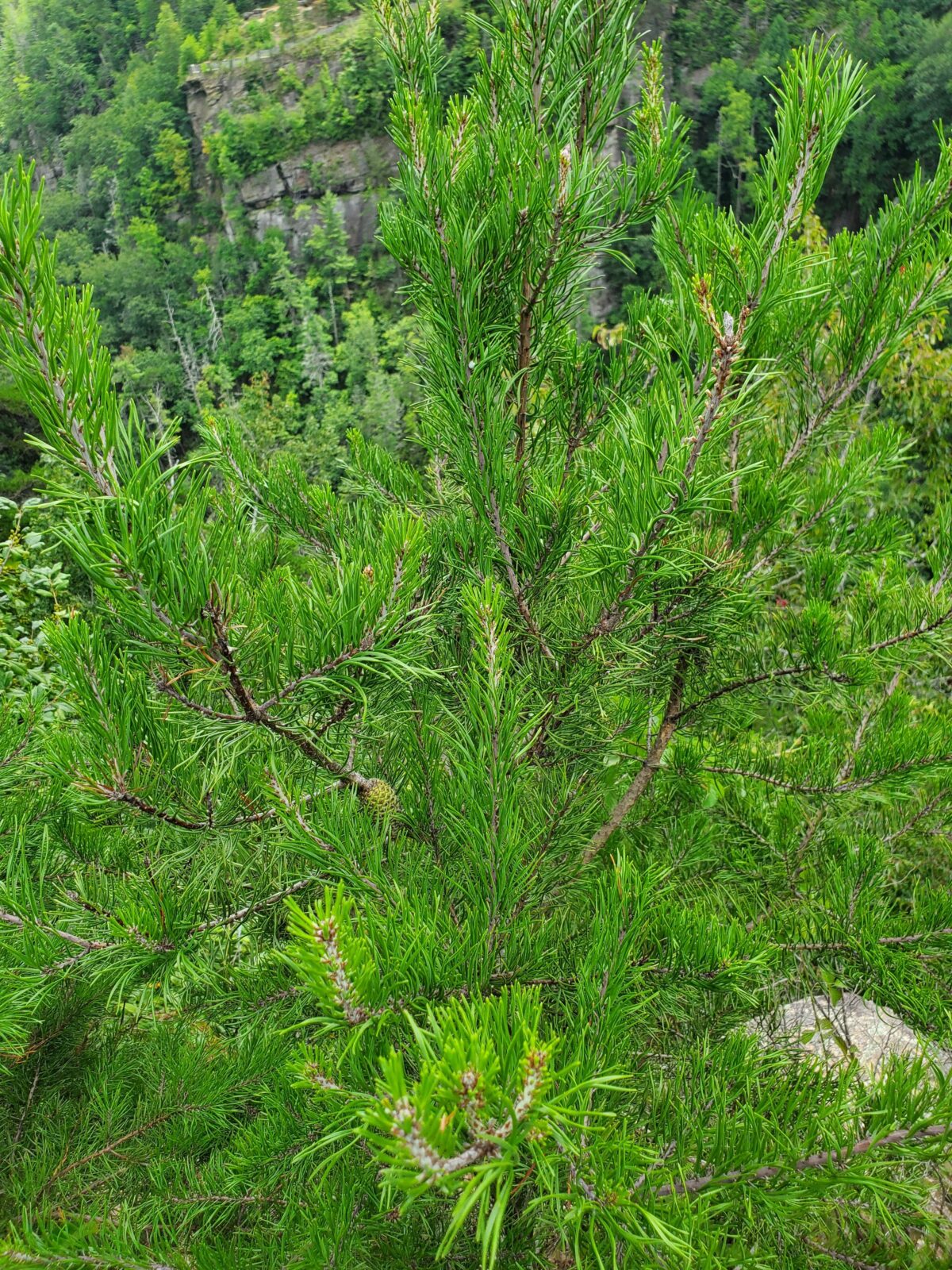Scientific name: Pinus spp.
This article covers a wide range of species in the genus pinus. Many pine trees have common names that refer to more than one variety of tree. These common names may refer to other coniferous trees that are not true pines such as spruce, fir, or cedar. So, just because something has “pine” in the name, doesn’t mean it’s actually a pine. See the identification section below for the names of the true pines native to Florida.
Indigenous and traditional uses of pine are varied. Most commonly, pine needles, bark and resin are used internally for respiratory tract issues, stuffy nose, sore throat, cold, cough, fever, to help the body resist infection, and to regulate blood pressure. Pine is also applied on the skin for muscle and nerve pain.
Identification
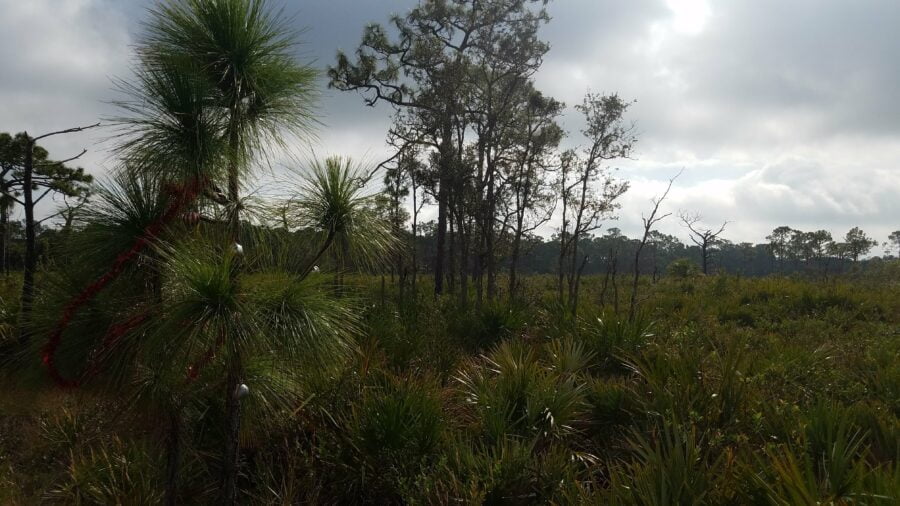
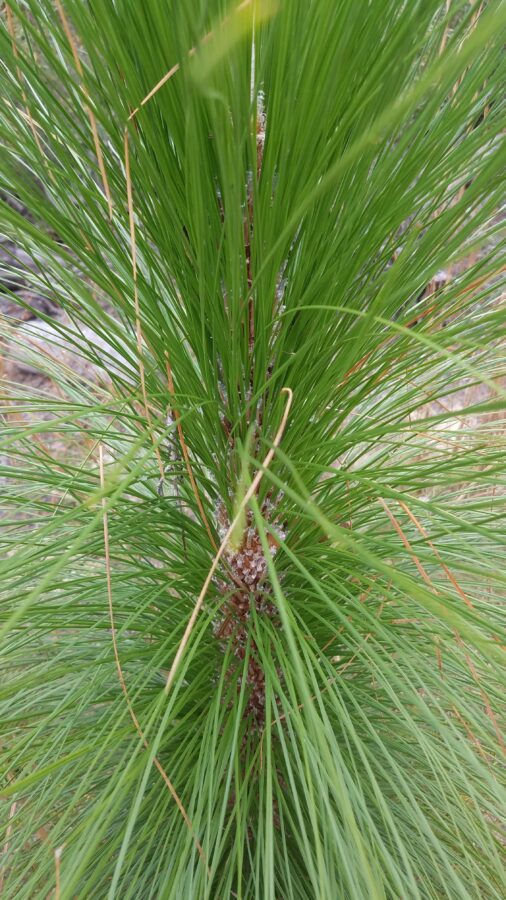
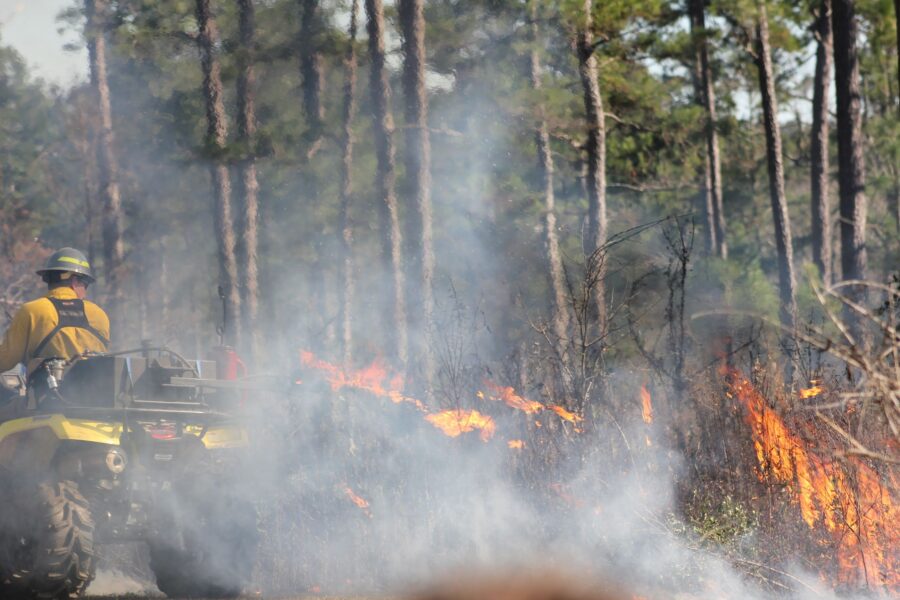
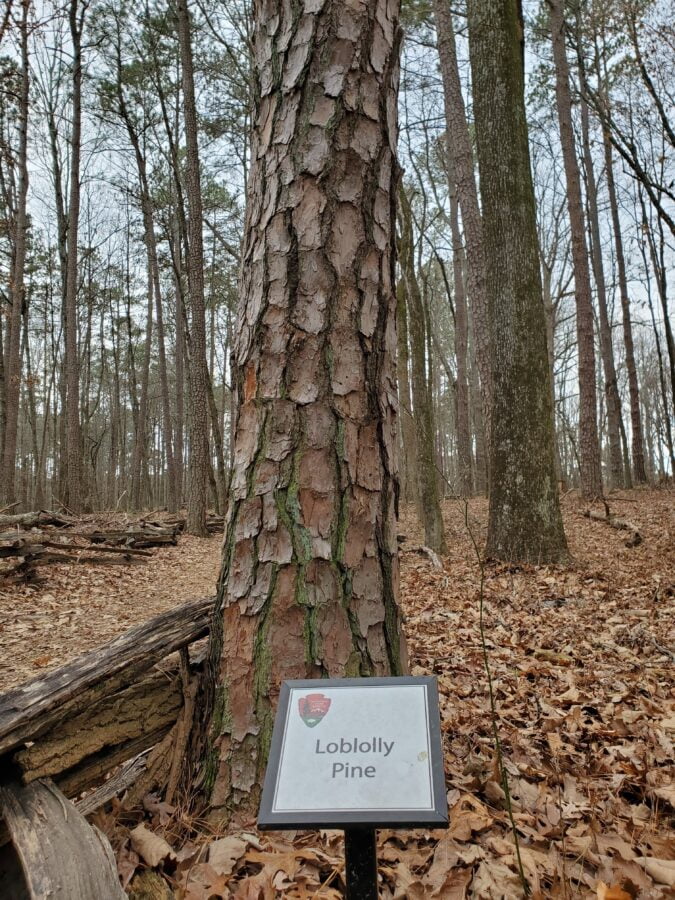
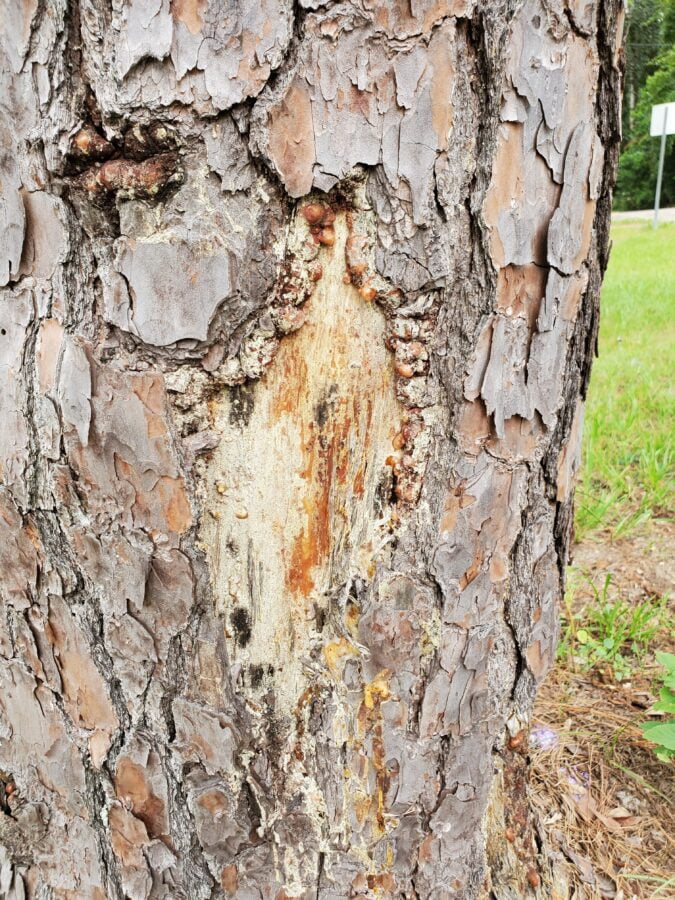
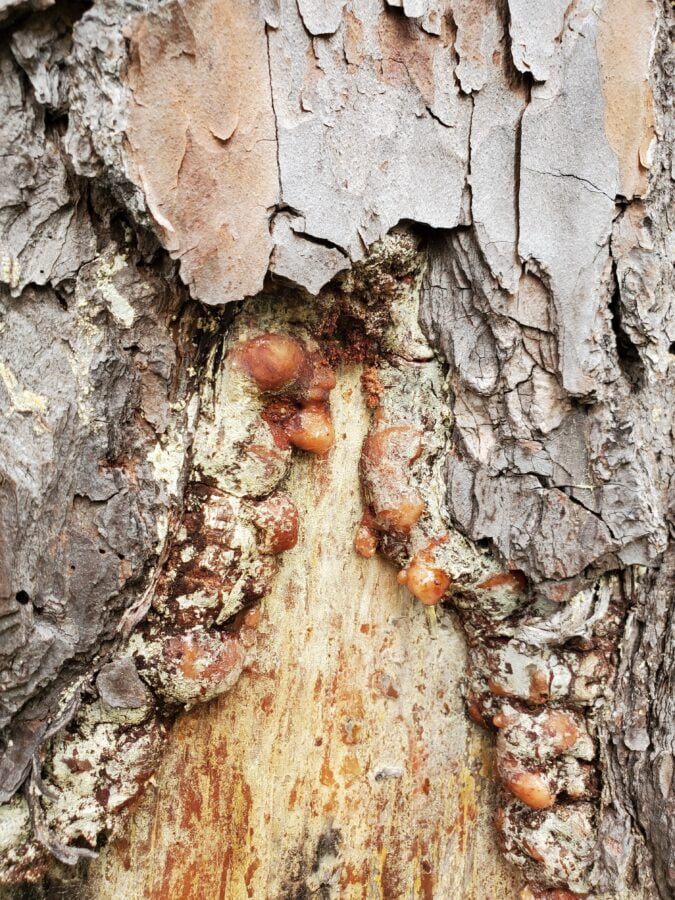
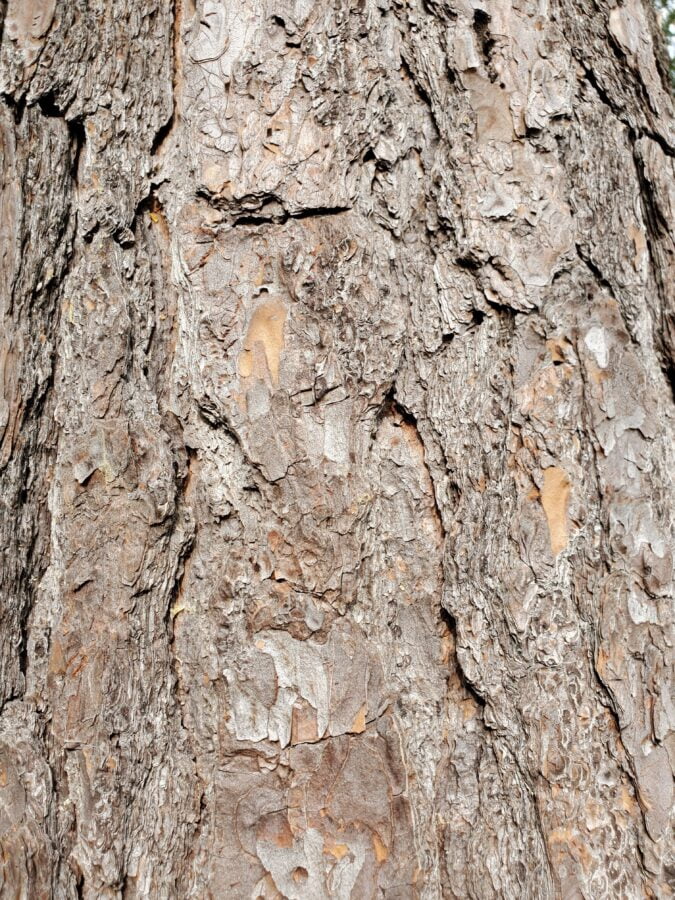
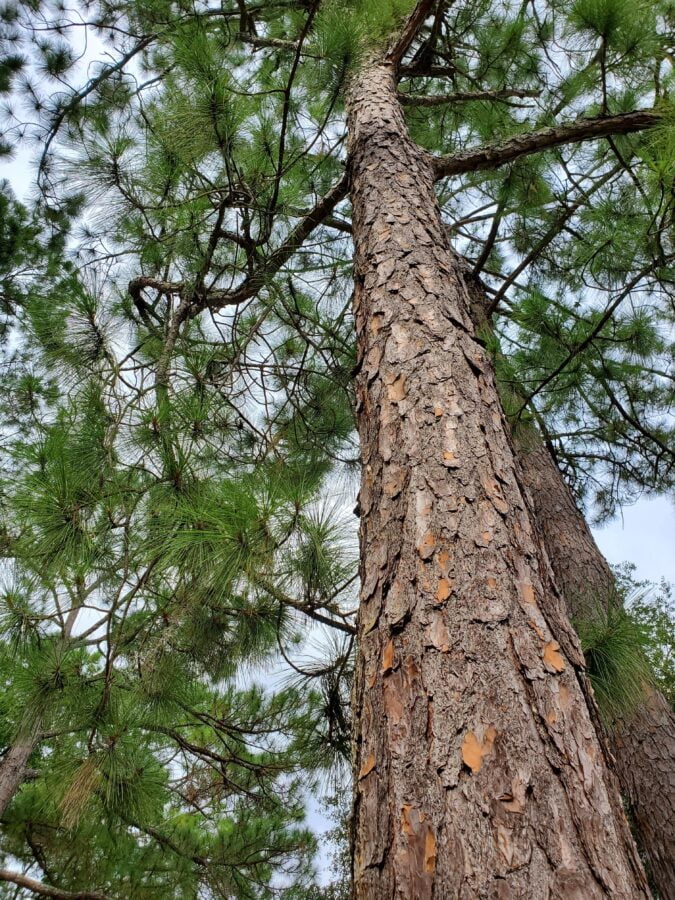
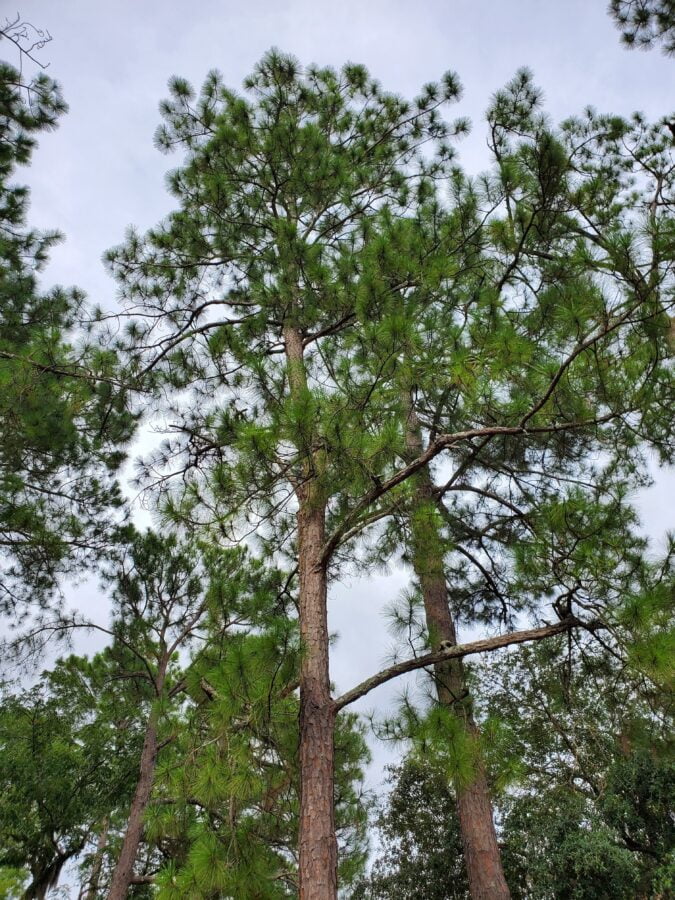
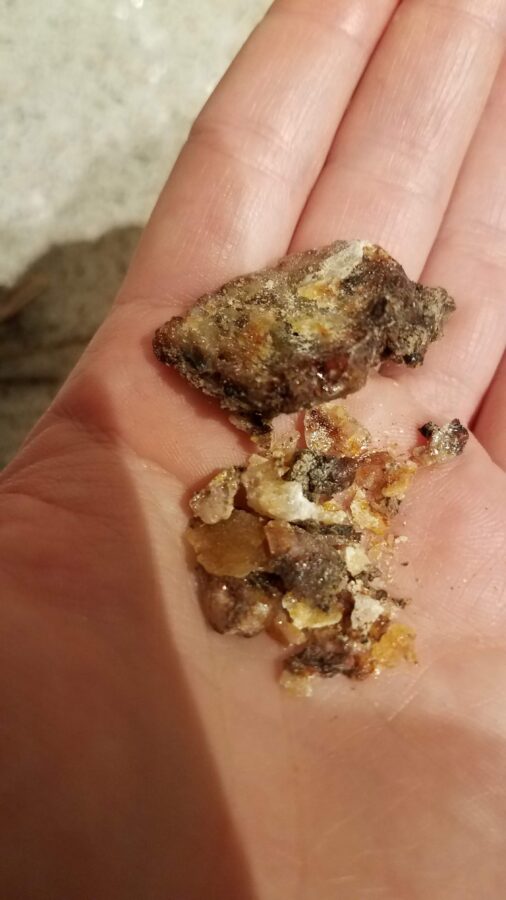
Pine trees are evergreens, which means that they keep their leaves year-round. The leaves of a pine tree are called needles because of their slender pointed appearance. They stay on the tree for many years before browning and falling off. Pine trees are also gymnosperms, which means that they belong to a group of plants that reproduce with seeds germinated in cones.
Pines are relatively easy to identify once you know a few key features to look for. First, look at the needles, pine needles form in bunches, called fascicles, of 2 to 5 leaves depending on the variety. The needles in a fascicle all point the same direction and are connected at one end and wrapped in a sheath. Needles vary greatly in length depending on the species, from short leaf pines with needles 3-4 inches long to longleaf pines with needles upwards to a foot in length. The needles grow directly off the tree’s branchlets. Check out the photos above for examples.1
These needle features can be compared to other evergreen conifers to tell them apart. Cypress and cedar trees have needles with a scaly texture, while pine needles are smooth. Fir and spruce trees have needles similar to short leaf pines but they are not gathered into fascicles, but rather grow individually.2
All native pines in Florida have a diamond-shaped bulge, or “umbo,” on the outer surface of each seed cone scale. Seeds develop and mature inside the cones protected by tightly overlapping woody scales. Some pines open their seed cones and release seeds after two years, others only release seeds in response to a forest fire.
Most other evergreen conifer trees are poisonous, so make sure you’ve properly identified the pine before using any part of it.
There are seven native varieties of pine that grow in Florida:
Loblolly Pine, Pinus taeda L.
Loblolly pine is common in the central part of the state from the Orlando area northward. Needles can be anywhere from 3 to 9 inches (8–23 cm) long but are generally 5 to 6 inches (12–15 cm). They usually occur in fascicles of three, though two or four are also possible. Seed cones are 2.5 to 4 inches (6–10 cm) long and stay on the tree for three years. Cones have stout, sharp prickles. The bark of young trees is almost black and scaly. Older trees have deep furrows, dividing the bark into irregular dark brown scaly blocks.
Longleaf Pine, Pinus palustris Mill.
As a seedling, longleaf pine goes through a “grass phase” where the only thing visible above ground is a dense clump of needles. After this phase, which generally lasts 5-7 years, the tree grows rapidly. The needles, in fascicles of three, are usually 8 to 12 inches (20–30 cm) long, but can be even longer. Seed cones are 6 to 10 inches (15–25 cm) in length. The small prickle on each umbo is recurved, bending down toward the base. The bark is thick, in orange-brown plates.
Pond Pine, Pinus serotina Michx.
Pond pine is often confused with loblolly pine. It grows in poorly drained flatwoods near bayheads and pond edges. The 2-3 inch (5–8 cm) long seed cones remain on the tree for 8 years or until a forest fire occurs. Mature cones can be opened by exposure to 333 to 336 F (167–169 C) dry heat for 20 seconds or by immersion in boiling water for a similar period.
Sand Pine, Pinus clausa (Chapm. ex Engelm.) Vasey ex Sarg.
Sand pine grows in very sandy, nutrient-poor soils. Sand pine is a small- to medium-sized tree with a conical crown and persistent low, lateral branches. It grows in open stands, and the trunk and branches are frequently twisted, giving the trees a picturesque look. The bark is fairly smooth, particularly near the top. The needles are 2 to 3 inches (5–8 cm) long and are in fascicles of two. Mature cones are 2 to 3 inches (5–8 cm) long, and often grouped in clusters. They may persist on the tree for many years open or unopened.
Shortleaf Pine, Pinus echinata Mill.
Shortleaf pine is a common tree found on dry hills and upland areas. In Florida, it is found in a small area in the panhandle, from the Aucilla River westward to Okaloosa County. Mature shortleaf pines have a tall, straight trunk. The bark of older trees has flat, reddish-brown plates that resemble jigsaw puzzle pieces. Many small resin pockets may be scattered throughout the bark. Needles are 2.75 to 4.5 inches (7–11 cm) long in fascicles of two, with some fascicles of three. The cones of shortleaf pine are 1.5 to 2.5 inches (4–6 cm) long. They appear in clusters and persist on the tree for several years after opening.
Slash Pine, Pinus elliottii Engelm.
The needles of slash pine are 4 to 10 inches (10–25 cm) long, most commonly in the range of 8 to 10 inches (20–25 cm). The fascicles are a mixture of twos and threes. The twigs are rough and are generally crowded with fascicles at the end, producing large “brooms” of needles. The cones are 2.75 to 6 inches (7–15 cm) long.
Spruce Pine, Pinus glabra Walter
Spruce pine is a short-needled pine found in hardwood hammocks from Alachua County northward and westward into the panhandle. Needles of spruce pine are 3.5 to 4 inches (9–10 cm) long and spirally twisted. They grow in fascicles of two. The seed cones are 1.5 to 3 inches (4–8 cm) long, and usually solitary. They open promptly to release the seeds at maturity but then persist on the tree for several years. Older trees have distinctive silvery-gray bark.
Much of the information in this section is summarized from information from the University of Florida IFAS Extension article “Common Pines of Florida”.
Growing/Foraging
Pines are everywhere in Florida and foraging is often as easy as going into your yard or to a nearby wooded area. Needles can be picked whenever they are green, the young tips of branches and needles, called pine tops, can be harvested in the Spring. Pine nuts are harvested from nearly mature geen cones, but trees that grow in the south don’t produce large nuts.3 Resin can be gleaned from spots where the bark has been damaged.
Pine trees can be grown from seeds collected from mature cones. Collect the seeds by shaking the cones upside down over a bag. Test the seeds by placing them in water, viable seed will sink while less healthy seeds will float. Plant the seeds in pots, just below the surface of the soil, and keep the soil moist. Seeds can take months to germinate.4
Pine saplings can be transplanted from the wild into a yard or garden. The process would be done quickly and with care to avoid stressing and killing the new tree. Pines have shallow root systems so dig out as much of the roots and soil around the tree as you can transport, digging at least 18 inches from the sapling. The hole at the new planting site should be prepared ahead of time. It should be shallow and twice the size of the root ball.5
Sustainability
Pine trees are resilient trees and harvesting reasonable amounts of needles, cones or resin will not harm them, in fact it’s unlikely you will be able to reach the majority of these tall trees’ needles. However stripping the majority of a tree’s needles can kill it and stripping bark can introduce disease.
Longleaf pines are critically endangered, with only 4% of habitat remaining intact. Avoid harvesting from these trees and instead focus on the other, far more common species.
Medicinal and Food Properties
Pine tops and needles in a tea are used for fevers, coughs, and colds6 and increase urination.
The fresh needles, especially the young needles, drank as tea are especially effective for clearing up sinus and lung congestion from colds and flu. The pine needles are an expectorant, helping you cough up the crud. They are also anti-microbial, helpful if there is an infection or to prevent one from starting. Pine needles are also anti-inflammatory, which helps reduce painful swelling.
The volatile oils in pine are disinfectant and clearing. A steam from boiling needles can be used to clear up congestion in the sinuses and lungs. The popular medicine Vick’s Vaporub was originally made with turpentine which is derived from pine resin. Compounds in pine have also been shown to reduce allergic reaction associated with asthma.7
Early research suggests that taking vitamin C along with a specific product containing pine extract (Enzogenol) for 5 weeks improves thinking and memory in middle-aged and older men.8
Cherokee healers used the sap of pines, like the longleaf and loblolly, to treat skin conditions and sores.9
Pine resin is used to make a variety of products including turpentine. There are folk remedies for turpentine but we do not recommend any of them. Turpentine is very toxic and drinking it can cause serious health issues.10
Pine pollen is taken for longevity in Traditional Chinese Medicine and studies have begun to back up this effect.11 Pine pollen also contains compounds similar to testosterone and is used as a natural energy booster and supplement for weight training.12
Healers of the Seminole Tribe in Florida use parts of the slash pine, called “cule” in Creek, to treat sores and boils. Tips of new branches with needles, about 4 inches long, are smashed up and boiled then applied to the skin. Pine tips are also used by the Seminole people in other herbal preparations.13 Pine sap or tar is commonly combined with oil and beeswax to make a drawing salve that is used for sores, woulds, splinters and a variety of skin issues.
Flavonoids in pine called OPCs have a role in cancer prevention by protecting against cell damage and also help reduce fat accumulation in the arteries, reducing the risk of heart disease.14
Safety
Most other evergreen conifer trees are poisonous, so make sure you’ve properly identified the tree.
Turpentine is very toxic and drinking it can cause serious health issues.
Avoid pine if pregnant. A compound found in pine needles has been shown to cause abortion in cows.15
Recipes
Pine needle tea
- Cut fresh pine needles into manageable pieces, 1 inch long or smaller
- Add 2-3 tablespoons of the needles to a mug
- Bring one cup of water to a boil then put over the needles
- Steep covered for 10-15 minutes
- Add honey or another sweetener to taste
Drink a cup a day as a tonic, up to 4 cups a day to clear up congestion or other persistent issues.
Pine needle steam16
- Get a large sturdy bowl
- Boil enough purified or distilled water to fill your bowl
- Add about 1/2 a cup pine needles to the bowl for every pint of hot water
- Pour the hot water over the needles
- Carefully sit with you face above the bowl and cover your head with a towel
- Breath in the steam for 15-20 minutes
Pine and dog fennel rinse17
Use this infusion of pine and dog fennel to clean sores.
- Collect a few young pine branches with needles
- Crush them with a hammer
- Add dog fennel
- Cover with water and boil for 10 minutes
- Let it cool, then wash the sores well with the liquid.
Pine bath salts18
- In a large jar, add alternating layers of epsom salt and chopped up pine needles until the jar is full.
- Let sit for a few days up to a week
- Add 1-2 cups to a hot bath
This mixture will last indefinitely once made. Add an equal part olive oil to make this into a salt scrub.
Sources

